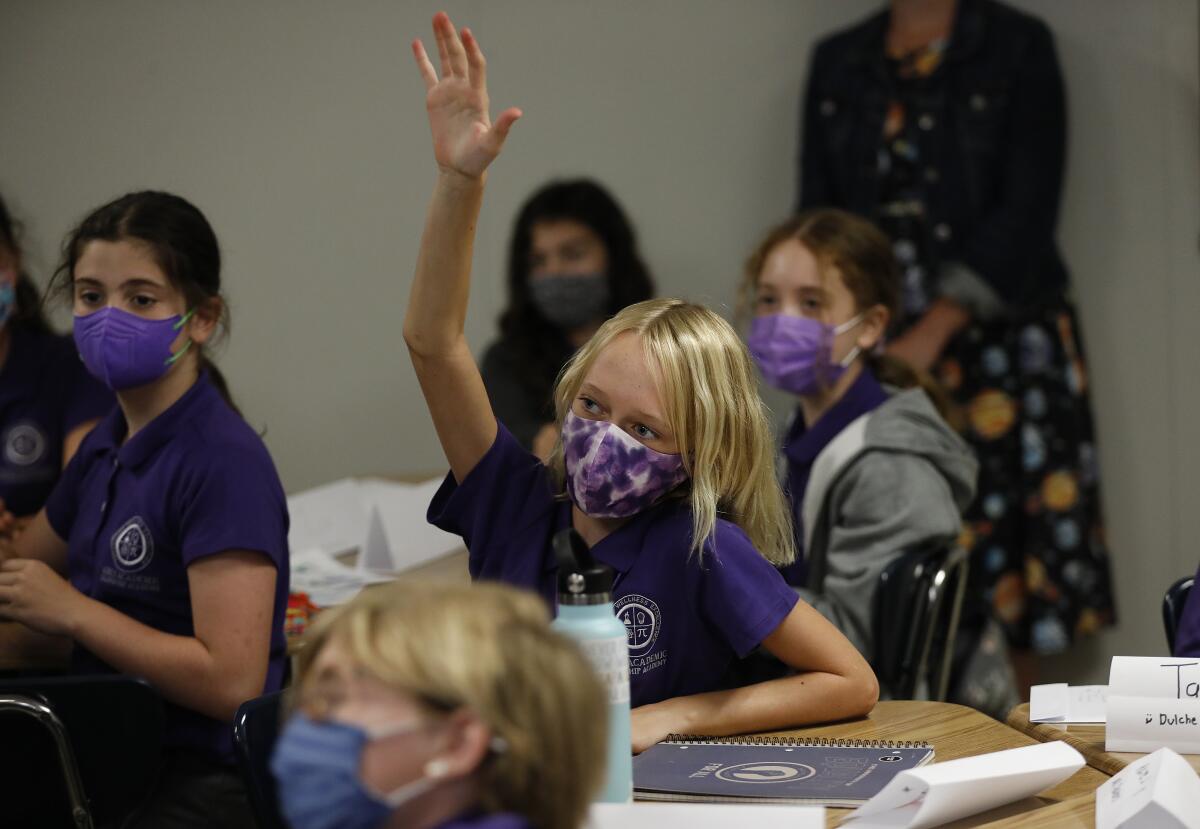Letters to the Editor: Common Core, phone addiction and other reasons kids are learning less

- Share via
To the editor: Your editorial regarding the drop in student test scores on the National Assessment of Educational Progress (NAEP) suggests several reasons for the outcome: a reduction in school funding, the end of No Child Left Behind and high teacher turnover.
But what about the introduction of the Common Core Standards during this period — and even more importantly, the new computer-based state assessments that replaced more reasonable paper-pencil tests?
Teachers do indeed teach to high-stakes assessments. But it is difficult, if not impossible, to teach to these tests, leaving many teachers bewildered about monitoring their students’ progress. Many districts, failing to recognize the futility of the effort, have mandated increased preparatory testing, crowding out more useful instruction without producing significant improvement in scores.
George Crowder, Los Angeles
..
To the editor: One answer not given in your editorial on why students are falling behind is the smartphone, the most damaging device to the acquisition of knowledge and critical thinking skills.
Smartphones are truly the death of education. Walk into any classroom in this nation, and I can guarantee you that many students are either surreptitiously looking at their phones or openly using them during instruction.
David Foster Wallace, the author of “Infinite Jest,” warned us many years ago of the all-consuming addiction to technology. In 1996, he was quoted as saying, “Entertainment’s chief job is to make you so riveted by it that you can’t tear your eyes away.”
Today’s students prove Wallace right.
Vivien Irving, Huntington Beach
..
To the editor: I was a teacher in California. You left out the most important word in getting better education: parents. Every teacher I know says the same thing: You get the education that parents demand.
I read about blame put everywhere but on uncaring parents. I’ve seen too many young teachers beaten down by a system that tries to solve a problem that caring parents could solve now.
Eventually, teachers do one of two things: Go into another profession, or just put in their time and stop caring.
Jane Olinger, Irvine
..
To the editor: I read the editorial with great interest, as I wanted to see how our communities fared during the pandemic. As is often the case, the Asian American and Pacific Islander community was not mentioned, even as the article discussed how white, Black and Latino children fared.
This is a frequent problem with the Bureau of Labor Statistics and the U.S. Centers for Disease Control and Prevention, and a tremendous disservice to AAPI communities. As far as I can tell though, the NAEP, the organization cited, does compile data for AAPI communities.
The Times, which represents a community inclusive of Asian Americans, can help address the issue of Asian American invisibility by either noting the statistic for AAPIs, or if it’s not available, to note that the statistic was not compiled. To do neither contributes to the problem.
Heidi Hu, Los Angeles
..
To the editor: You are absolutely right that targeted money is the only way to reach high-needs students.
I have a doctorate in education and managed vocational education programs in public schools for 30 years. The state has a program called the California Partnership Academies. These academies graduate 95% of their students, all with employable skills.
This is the best intervention program to help needy students. If we really want to help these kids, we will advocate to expand the California Partnership Academies.
James C. Wilson, San Diego
More to Read
A cure for the common opinion
Get thought-provoking perspectives with our weekly newsletter.
You may occasionally receive promotional content from the Los Angeles Times.









